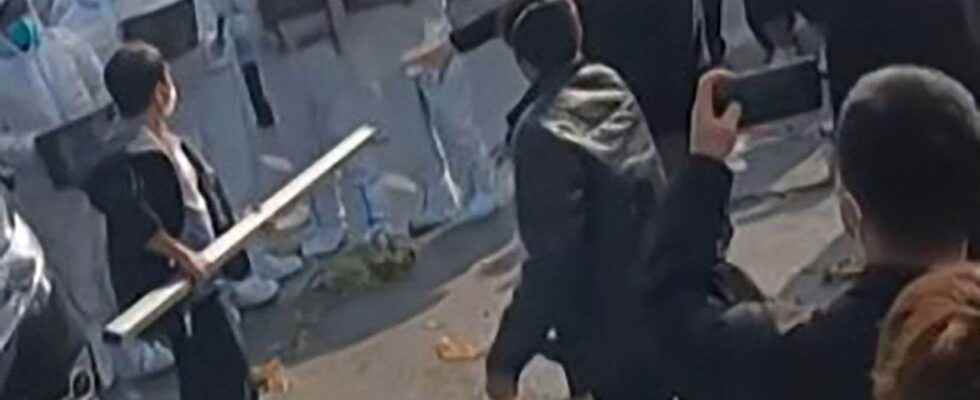Zhengzhou, a central Chinese city that hosts a huge iPhone factory, on Thursday ordered the confinement of six million people after an outbreak of COVID-19, leading to violent protests at the industrial site.
Hundreds of workers marched past the factory on Wednesday and faced police, who were armed with batons and dressed in full white protective suits.
In the aftermath, Zhengzhou authorities ordered a major screening campaign in several districts of the city. These neighborhoods are confined for five days from Friday midnight.
Residents of the city center are no longer allowed to leave the area without a negative PCR test and permission from local authorities. They are advised not to leave their homes, “unless necessary”.
These measures concern several districts and affect about half of the inhabitants of Zhengzhou. They do not cover the area of the iPhone factory, where workers have already been subject to restrictions for several weeks.
A worker told AFP that the protests started because of a controversy over the amount of a bonus promised to workers at the factory, owned by Taiwanese giant Foxconn, Apple’s main subcontractor.
According to this worker, the bonus would have been reduced from 3000 to 30 yuan (from 560 to 5.60 $CA), which would have caused great dissatisfaction among the staff.
Several employees are also infuriated by the “chaotic” living conditions at the site due to anti-COVID restrictions, said the worker, who wishes to remain anonymous to avoid possible reprisals.
“Technical error”
Foxconn apologized on Thursday, saying a “technical error” in its payment system was to blame for the bonus issue. The group said it “fully understands” workers’ concerns.
“The company will also do its best to proactively resolve reasonable employee concerns and requests,” the Taiwanese company said.
The American giant Apple, whose iPhone is the flagship product, told AFP on Thursday that it has representatives currently present on the site.
The California group is “reviewing the situation and working closely with Foxconn to ensure their employees’ concerns are addressed,” he said.
Last month, workers, panicked by the unexpected confinement of the factory, had fled the site on foot.
Under China’s strict “zero COVID” health policy, the slightest spike in cases leads to shutting down entire cities and quarantining people who have COVID.
But this strategy is now causing the weariness of a large part of the population. And the number of infections is skyrocketing.
The Ministry of Health announced Thursday a new record for the number of people declared positive in 24 hours, at 31,444 local cases – including 27,517 asymptomatic.
This number exceeds the previous record (29,317) recorded in mid-April, when the Shanghai metropolis was confined.
Makeshift hospitals
However, these figures appear low in view of the Chinese population (1.4 billion inhabitants) and the records observed in Western countries.
Several other major Chinese cities, including Beijing, Shanghai and Chongqing, have also tightened restrictions.
The capital now requires a negative PCR test of less than 48 hours to enter public places such as shopping malls, hotels and administrative buildings.
Many schools have moved to distance learning. Most restaurants, bars and shops are closed.
The Guangzhou manufacturing hub, the epicenter of the current COVID wave, has built thousands of temporary hospital rooms to accommodate patients.
The government announced on November 11 an “optimization” of anti-COVID restrictions, with the relaxation of several measures, including the reduction of the duration of quarantines, in particular for travelers arriving from abroad.
But Shijiazhuang, a neighboring township of Beijing which was considered a pilot city to test this reopening strategy, has reversed most of the relaxations – as have other localities.
“The road to reopening could be slow, costly and bumpy,” Ting Lu, an economist for Nomura Bank, said in a note.
